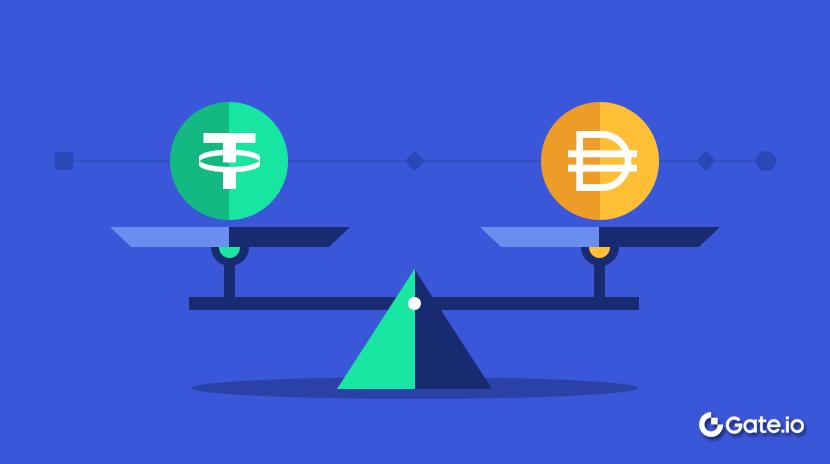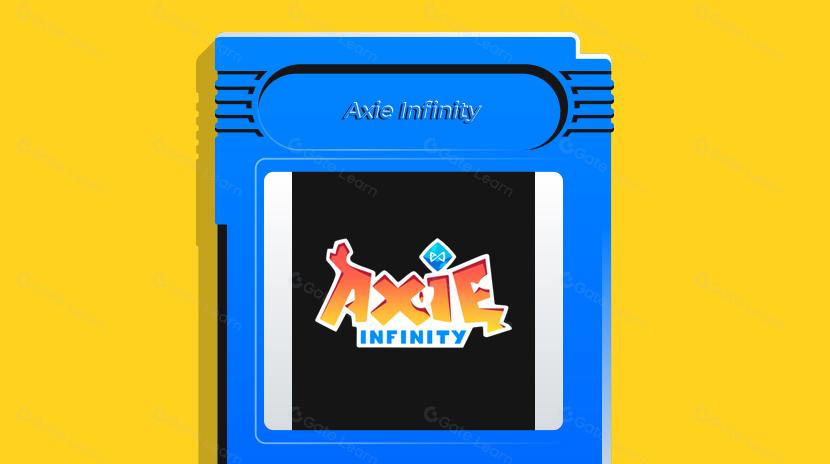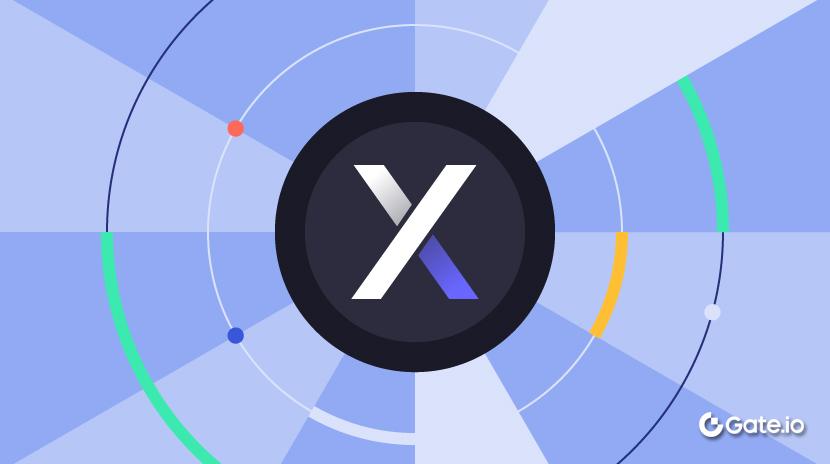Pengenalan terhadap Sektor Peminjaman Web3 Saat Ini
Panduan ini menjelajahi lanskap peminjaman Web3, mencakup peminjaman yang dijamin berlebihan, peminjaman berbasis kredit, pinjaman kilat, dan peminjaman aset dunia nyata (RWA). Pelajari tentang mekanisme kunci, proyek-proyek terkemuka, dan tren-tren yang sedang berkembang yang membentuk masa depan keuangan terdesentralisasi (DeFi) dan pasar peminjaman global.Latar Belakang Industri dan Kondisi Saat Ini
Pengenalan teknologi Web3 telah membawa perubahan revolusioner ke sektor keuangan, terutama dalam industri peminjaman. Model peminjaman tradisional bergantung pada lembaga keuangan terpusat, yang seringkali tidak efisien, kurang transparan, dan memiliki hambatan masuk yang tinggi. Sebaliknya, peminjaman Web3 memanfaatkan desentralisasi, transparansi, dan otomatisasi untuk membentuk kembali hubungan peminjaman dan menyediakan layanan keuangan yang lebih fleksibel, efisien, dan inklusif. Melalui blockchain dan kontrak pintar, peminjaman Web3 mengotomatisasi proses pinjaman, mengurangi risiko kontra pihak dan meningkatkan keamanan modal. Transaksi di blockchain bersifat publik dan transparan, meningkatkan kepercayaan pengguna dan mengurangi risiko asimetri informasi. Kontrak pintar secara otomatis mengeksekusi perjanjian peminjaman, termasuk manajemen agunan, perhitungan bunga, dan likuidasi, meningkatkan efisiensi dan mengurangi kesalahan manusia dan risiko moral.
Sebagai komponen inti dari keuangan terdesentralisasi (DeFi), pasar pinjaman Web3 sering diukur berdasarkan ukuran dan tingkat aktivitasnya, yang keduanya berfungsi sebagai indikator utama kesehatan pasar. Selama booming DeFi dari 2021 hingga 2022, pasar pinjaman melihat TVL (Total Value Locked) melonjak ke level tertinggi dalam sejarah, didorong oleh penambangan likuiditas hasil tinggi, suku bunga rendah, dan antusiasme spekulatif. Namun, karena kebijakan moneter global diperketat (seperti kenaikan suku bunga Federal Reserve) dan pasar crypto memasuki siklus bearish, posisi leverage terlepas, yang menyebabkan penurunan TVL. Selama tiga tahun terakhir, peristiwa angsa hitam besar seperti keruntuhan UST/LUNA dan krisis FTX telah mengungkap kerentanan dalam model overcollateralized, terutama ketergantungan mereka pada jaminan aset tunggal (misalnya, ETH). Krisis ini mengguncang kepercayaan pasar, mengakibatkan pertumbuhan TVL stagnan. Sebagai tanggapan, protokol terkemuka seperti Aave dan Compound mempercepat inovasi, memperkenalkan mekanisme pinjaman baru. Setelah tahun 2023, munculnya tokenisasi aset dunia nyata (RWA) dan perluasan ekosistem Bitcoin Layer2 menyuntikkan momentum baru ke pasar pinjaman. Dengan implementasi penuh peraturan MiCA pada tahun 2024, kepatuhan telah menjadi persyaratan mendasar untuk protokol pinjaman arus utama.
Per 9 Maret 2025, total nilai yang terkunci (TVL) di sektor peminjaman Web3 telah mencapai sekitar $41.7 miliar. Hal ini mencerminkan transisi industri dari pertumbuhan yang cepat dan tidak terstruktur ke model operasional yang lebih canggih, seiring dengan meningkatnya kepercayaan pengguna dalam platform peminjaman terdesentralisasi. Hal ini juga menyoroti basis modal yang semakin berkembang di pasar, menandakan fase pertumbuhan baru yang didorong oleh efisiensi dan keamanan.

Selain itu, total pinjaman yang belum lunas mencapai sekitar $18.6 miliar, menunjukkan bahwa aktivitas peminjaman tetap kuat dan permintaan untuk pinjaman terdesentralisasi terus berkembang.

Jenis Model Peminjaman
Ada berbagai model peminjaman di sektor peminjaman Web3. Artikel ini terutama memperkenalkan peminjaman jaminan berlebihan, peminjaman tanpa jaminan (kredit), pinjaman kilat, dan peminjaman ARL (aset dunia nyata).
Peminjaman Overcollateralized
Dalam model peminjaman yang dijamin oleh aset lebih dari cukup, peminjam harus menyediakan aset kripto senilai lebih dari jumlah pinjaman sebagai jaminan untuk memastikan keamanan pinjaman. Model ini banyak digunakan di platform keuangan terdesentralisasi (DeFi) seperti MakerDAO, Compound, dan Aave. Mekanisme ini berfungsi sebagai berikut: peminjam menyetor sejumlah aset kripto sebagai jaminan di platform. Karena volatilitas harga kripto yang tinggi, platform biasanya mengharuskan overkolateralisasi, artinya nilai jaminan harus melebihi jumlah pinjaman untuk mengurangi risiko. Peminjam dapat memperoleh sejumlah aset kripto atau stablecoin yang sesuai berdasarkan nilai jaminan. Sebagai contoh, di MakerDAO, pengguna memberikan ETH sebagai jaminan untuk menghasilkan stablecoin DAI. Peminjam harus membayar bunga berdasarkan tingkat yang ditetapkan oleh platform. Jika nilai jaminan turun di bawah rasio kolateralisasi minimum platform, sistem secara otomatis melikuidasi sebagian atau seluruh jaminan untuk memastikan solvabilitas pinjaman.
Pinjaman Tanpa Jaminan (Kredit) & Pinjaman Kilat
Dalam model pinjaman tanpa agunan (kredit), peminjam tidak perlu menyediakan agunan tradisional. Sebaliknya, persetujuan pinjaman bergantung pada riwayat kredit atau reputasi komunitas mereka. Proyek seperti TrueFi menggunakan DAO (Decentralized Autonomous Organization) voting dan sistem penilaian kredit untuk mengevaluasi kualifikasi peminjam sebelum menentukan jumlah pinjaman dan tingkat bunga. Peminjam mengajukan bukti kredit atau dokumen yang didukung oleh pihak ketiga, yang kemudian ditinjau oleh anggota komunitas sebelum persetujuan pinjaman. Keuntungan utama dari pinjaman berbasis kredit adalah menurunkan hambatan pinjaman, membuatnya dapat diakses oleh pengguna yang kurang memiliki agunan yang memadai, sambil juga meningkatkan efisiensi modal. Namun, keberhasilannya bergantung pada sistem evaluasi kredit yang kuat dan transparan untuk menilai kredibilitas peminjam dengan akurat dan mengendalikan risiko gagal bayar.
Pinjaman kilat adalah jenis pinjaman tanpa jaminan yang unik yang memanfaatkan sifat atom blockchain transaksi. Mereka memungkinkan pengguna untuk meminjam jumlah besar dalam satu transaksi, menggunakan dana untuk arbitrase, likuidasi lintas-platform, atau operasi lainnya, dan mengembalikan pinjaman sebelum transaksi berakhir. Jika pinjaman tidak dibayar kembali dalam transaksi yang sama, seluruh proses secara otomatis dibalik, memastikan keamanan tinggi bagi pemberi pinjaman.
Pinjaman kilat umumnya digunakan untuk:
- Perdagangan arbitrase dengan memanfaatkan perbedaan harga di berbagai platform
- Menyediakan likuiditas untuk likuidasi
- Mengoptimalkan aliran modal dalam operasi lintas-rantai
Meskipun tidak memerlukan jaminan tradisional, pinjaman kilat menuntut logika transaksi yang canggih dan keamanan kontrak yang tinggi, karena kegagalan dalam eksekusi mengakibatkan transaksi gagal. Secara keseluruhan, pinjaman kilat menawarkan mekanisme pendanaan yang sangat efisien, instan, dan fleksibel bagi pengguna DeFi, yang mendorong inovasi keuangan lebih lanjut.
Peminjaman Aset Dunia Nyata (RWA)
Pemberian pinjaman aset dunia nyata (RWA) mengacu pada tokenisasi aset dunia nyata—seperti properti, faktur, dan piutang—dan memperkenalkannya ke platform blockchain sebagai jaminan pinjaman. Model ini bertujuan untuk menjembatani aset keuangan tradisional dengan DeFi, memperluas aplikasi pemberian pinjaman kripto.
Proses berjalan sebagai berikut:
- Aset dunia nyata ditokenisasi menggunakan kerangka hukum dan teknis untuk membuat representasi berbasis blockchain dari hak kepemilikan atau hak pendapatan.
- Pengguna menggadaikan tokenisasi RWAs di platform DeFi untuk meminjam crypto atau stablecoin.
- Platform menetapkan tingkat bunga dan mekanisme likuidasi berdasarkan sifat dan kondisi pasar jaminan untuk memastikan pinjaman yang adil dan aman.
Sebagai contoh, platform Centrifuge membuat tokenisasi faktur dan piutang, menyediakan saluran pembiayaan baru untuk UMKM sambil menawarkan pengembalian yang stabil bagi investor. Platform pemberian pinjaman, Tinlake, memungkinkan pengguna untuk meminjam dengan jaminan RWA, sementara investor dapat mendanai pinjaman ini untuk mendapatkan hasil.
Per 9 Maret 2025, nilai total yang terkunci (TVL) di sektor RWA telah mencapai $17 miliar, tidak termasuk stablecoin dan mencakup kredit swasta dan aset yang didukung oleh obligasi Departemen Keuangan AS yang telah ditokenisasi. Hal ini menunjukkan integrasi yang semakin cepat antara blockchain dan keuangan tradisional.
Saat ini, kredit swasta mendominasi 70% pasar RWA, menunjukkan bahwa investor institusi semakin mengakui pasar kredit on-chain. Lebih banyak perusahaan dan dana kini menggunakan blockchain untuk manajemen aset dan pembiayaan. Sementara itu, 21% pasar RWA terdiri dari aset yang di-tokenisasi oleh U.S. Treasury, menyoroti permintaan yang meningkat untuk alat investasi yang rendah risiko dan sesuai peraturan. Proyek seperti Ondo Finance telah memperkenalkan produk Treasury yang di-tokenisasi (misalnya, OUSG), memungkinkan lembaga dan individu untuk menyimpan Surat Utang Amerika Serikat langsung on-chain, meningkatkan aksesibilitas dan likuiditas.
Tren ini menunjukkan bahwa tokenisasi RWA bergerak melampaui bukti konsep dan masuk ke aplikasi dunia nyata, dengan DeFi menjadi bagian integral dari pasar keuangan global. Ketika lembaga keuangan tradisional lebih banyak memasuki ruang ini dan kebijakan regulasi (seperti MiCA) menjadi lebih jelas, TVL pasar RWA diperkirakan akan tumbuh lebih lanjut, membentuk ekosistem keuangan on-chain yang lebih matang.

Studi Kasus Proyek Unggulan
Peminjaman Overcollateralized
MakerDAO
MakerDAO adalah salah satu proyek paling awal untuk mengintegrasikan pinjaman terdesentralisasi dengan konsep stablecoin, dengan mekanisme intinya berdasarkan overcollateralization untuk menghasilkan stablecoin DAI. Di platform MakerDAO, pengguna membuat Vault (sebelumnya disebut CDP, atau Posisi Utang yang Dijaminkan) dan menyetor ETH atau aset kripto lain yang didukung sebagai jaminan ke dalam kontrak pintar. Sistem ini mensyaratkan bahwa aset yang dijaminkan harus melebihi nilai DAI yang diterbitkan, biasanya setidaknya 150% atau lebih, memastikan margin keamanan yang memadai jika terjadi fluktuasi pasar. Setiap Vault memiliki nilai minimum likuidasi—jika nilai jaminan turun dan menyebabkan rasio jaminan turun di bawah ambang batas ini, sistem akan otomatis memicu likuidasi. Ini melibatkan pelelangan sebagian atau seluruh agunan untuk membayar utang yang belum dibayar, sehingga memastikan pengendalian risiko yang efektif dalam pemberian pinjaman. Selain itu, MakerDAO mempertahankan sistemnya dengan membebankan "biaya stabilitas" kepada pemegang Vault, yang bertindak sebagai bunga atas DAI yang dipinjam. Biaya ini dalam mata uang DAI dan disesuaikan melalui mekanisme tata kelola MakerDAO, di mana pemegang token MKR memberikan suara pada parameter utama, seperti rasio jaminan minimum, biaya stabilitas, dan plafon utang. Secara keseluruhan, desain MakerDAO berfokus pada menjaga stabilitas DAI dan memastikan tata kelola yang terdesentralisasi, memungkinkan sistem untuk mengatur diri sendiri dan pulih bahkan selama volatilitas pasar yang ekstrem.
Aave
Aave adalah platform peminjaman terdesentralisasi berbasis kolam likuiditas, menggunakan model perbankan ganda untuk deposito dan pinjaman. Pengguna yang mendepositokan berbagai aset kripto di Aave menerima aTokens (mis., aETH, aDAI), yang mewakili bagian mereka dari kolam deposito dan secara otomatis mengakumulasi bunga dari waktu ke waktu. Peminjam harus memberikan jaminan sebelum meminjam, dan jumlah pinjaman mereka ditentukan oleh rasio pinjaman-ke-nilai (LTV) yang ditetapkan oleh platform. Model tingkat bunga Aave dinamis, menyesuaikan secara real-time berdasarkan penawaran dan permintaan, yang mendorong modal untuk mengalir ke dalam kolam aset yang banyak diminati. Jika rasio kolateralisasi peminjam turun di bawah ambang batas keamanan platform, sistem secara otomatis memicu likuidasi untuk melindungi kolam likuiditas. Selain peminjaman yang dijamin lebih dari cukup, Aave memperkenalkan pinjaman kilat, memungkinkan pengguna meminjam tanpa jaminan dalam satu transaksi. Jika dana yang dipinjam tidak dikembalikan sebelum transaksi berakhir, seluruh proses akan kembali, memastikan risiko nol bagi pemberi pinjaman. Fitur ini secara signifikan memperluas kasus penggunaan arbitrase, refinancing, dan optimisasi likuiditas. Aave juga mendukung delegasi kredit, memungkinkan pengguna memberi wewenang kepada orang lain untuk meminjam menggunakan batas kredit mereka tanpa mentransfer aset sesungguhnya, yang lebih meningkatkan fleksibilitas dan efisiensi modal protokol. Tata kelola dikendalikan oleh pemegang token AAVE, yang mengajukan dan memberikan suara atas peningkatan protokol.
Aave memegang posisi terdepan di pasar peminjaman Web3, dengan total nilai terkunci (TVL) sebesar $29,9 miliar, yang menyumbang 72% dari pangsa pasar peminjaman. Volume pinjaman yang masih beredar mencapai $11,6 miliar, mewakili 62% dari pangsa pasar. Angka-angka ini menyoroti dominasi Aave baik dalam skala modal maupun aktivitas peminjaman, memperkuat perannya sebagai protokol peminjaman Web3 kelas atas.

Aave telah berkembang melalui tiga versi utama (V1, V2, dan V3), terus meningkatkan efisiensi peminjaman, optimisasi modal, dan keamanan:
- V1: Versi awal, yang memperkenalkan pinjaman yang dijamin dengan jaminan lebih tetapi kurang fitur lanjutan.
- V2: Memperkenalkan pinjaman kilat, pertukaran agunan, dan pengalihan suku bunga, meningkatkan fleksibilitas dan keamanan likuidasi.
- V3: Peningkatan interoperabilitas lintas-rantai, efisiensi modal yang dioptimalkan, dan pengenalan strategi manajemen risiko yang lebih halus, memungkinkan transfer dana yang lebih lancar dan lebih aman di seluruh jaringan.
V3 juga meningkatkan arsitektur kontrak pintar, mengurangi biaya transaksi, dan meningkatkan antarmuka pengguna, menjadikan peminjaman DeFi lebih terbuka, fleksibel, dan aman.
Dibandingkan dengan versi sebelumnya, V3 secara signifikan meningkatkan fungsionalitas, keamanan, dan efisiensi, menyebabkan lonjakan adopsi pengguna. Keuntungan utama dari V3 meliputi:
- Biaya transaksi lebih rendah
- Efisiensi modal yang lebih tinggi
- Kemampuan lintas-rantai yang lebih kuat
Peningkatan ini secara dramatis telah meningkatkan pengalaman pengguna, menjadikan V3 pilihan utama untuk pinjaman dan peminjaman. Pada 9 Maret 2025, 98% pengguna Aave kini beroperasi di V3, menunjukkan dominasinya dan adopsi yang kuat di pasar peminjaman DeFi.

Kompaun
Compound adalah protokol peminjaman yang overcollateralized yang terkenal, dengan konsep inti dari menggabungkan semua aset yang didepositkan ke dalam kolam likuiditas bersama, di mana hak deposit pengguna diwakili oleh cTokens. Ketika pengguna mendepositkan aset ke Compound, mereka menerima cTokens yang sesuai (misalnya, cETH, cDAI), yang tidak hanya mewakili bagian deposit mereka tetapi juga meningkat nilainya dari waktu ke waktu saat bunga mengakumulasi. Mekanisme peminjaman Compound mengikuti model overcollateralization standar, di mana pengguna harus menyediakan agunan pada rasio yang ditentukan oleh platform untuk mengamankan pinjaman. Jumlah pinjaman ditentukan oleh faktor agunan, dan jika rasio agunan jatuh di bawah ambang batas keamanan, kontrak pintar secara otomatis memicu likuidasi, menjual sebagian dari agunan dengan diskon untuk mendapatkan kembali pinjaman yang belum lunas. Model tingkat bunga di Compound didorong oleh algoritma, menyesuaikan secara otomatis berdasarkan tingkat pemanfaatan kolam aset. Hal ini mendorong aliran modal ke dalam kolam likuiditas sambil juga membatasi peminjaman berlebih selama periode permintaan tinggi. Compound juga memperkenalkan token governance COMP, yang memungkinkan pemegangnya untuk mengusulkan dan memberikan suara pada parameter protokol kunci, seperti model tingkat bunga dan denda likuidasi. Serupa dengan Aave, Compound bertujuan untuk mengotomatisasi peminjaman dan manajemen risiko, tetapi fokus utamanya adalah untuk menyederhanakan pengalaman pengguna dan memaksimalkan efisiensi modal. Model cToken memungkinkan deposito untuk dengan lancar menggunakan aset deposit mereka di seluruh ekosistem DeFi, menyediakan likuiditas dan fleksibilitas yang lebih besar.
Pinjaman Tanpa Agunan (Kredit) dan Pinjaman Kilat
TrueFi
TrueFi adalah platform pinjaman berbasis kredit, juga dikenal sebagai pinjaman tanpa agunan, yang memberikan pinjaman tanpa memerlukan agunan tradisional. Alih-alih mengandalkan deposit aset, TrueFi menentukan kelayakan kredit peminjam melalui peringkat kredit dan tata kelola komunitas, memungkinkan penerbitan pinjaman. Di TrueFi, peminjam tidak perlu mendepositkan kripto sebagai agunan; sebaliknya, mereka mengajukan aplikasi pinjaman dan menjalani evaluasi kredit untuk menentukan batas pinjaman mereka. Model penilaian kredit TrueFi tidak hanya mengandalkan data on-chain tetapi juga mempertimbangkan catatan transaksi historis, verifikasi identitas, dan bahkan informasi kredit eksternal. Proses evaluasi diatur oleh pemegang token TRU, yang meninjau aplikasi dan memilih kondisi pinjaman.
Proses persetujuan pinjaman mengikuti langkah-langkah ini:
- Peminjam mengajukan permintaan pinjaman dengan dokumen keuangan dan identitas yang relevan untuk membuktikan kelayakan kredit mereka.
- Sistem peringkat kredit protokol melakukan evaluasi awal menggunakan riwayat pembayaran masa lalu, reputasi komunitas, dan faktor-faktor relevan lainnya.
- Komite kredit atau pemegang token TRU meninjau skor kredit dan memberikan suara pada persetujuan pinjaman, jumlah pinjaman, tingkat bunga, dan syarat pembayaran kembali.
Melalui metode ini, TrueFi memungkinkan pengguna yang layak kredit untuk mengakses pembiayaan tanpa harus menyediakan jaminan tradisional.
Model peminjaman berbasis kredit TrueFi menawarkan keuntungan signifikan. Ini menurunkan hambatan pinjaman, memungkinkan pengguna tanpa agunan kripto bernilai tinggi untuk mengakses likuiditas. Selain itu, karena syarat pinjaman ditentukan melalui tata kelola komunitas, protokol ini memastikan transparansi dan desentralisasi. Namun, peminjaman tanpa agunan juga memiliki risiko gagal kredit. Untuk mengurangi risiko ini, TrueFi telah mengimplementasikan sistem peringkat kredit dinamis, tingkat bunga yang dapat disesuaikan, dan mekanisme denda gagal. Misalnya, jika seorang peminjam gagal, platform dapat memberlakukan pengurangan skor reputasi atau menangguhkan akses pinjaman mereka sebagai bentuk kompensasi risiko. TrueFi terus meningkatkan sistem data kreditnya, bertujuan untuk meningkatkan akurasi dan keadilan evaluasi kreditnya.
Aave
Selain peminjaman berlebihan, pinjaman kilat Aave adalah salah satu inovasi peminjaman yang paling signifikan. Berbeda dengan model peminjaman tradisional, pinjaman kilat Aave memungkinkan pengguna meminjam dana tanpa agunan dalam satu transaksi. Namun, dana yang dipinjam harus digunakan dan dikembalikan dalam transaksi yang sama—jika tidak, seluruh transaksi secara otomatis dikembalikan. Mekanisme ini memanfaatkan sifat atomik dari transaksi blockchain, memastikan bahwa semua operasi dalam transaksi harus berhasil; jika tidak, seluruh status dikembalikan ke awal transaksi, menjamin keamanan absolut dana platform.
Pinjaman kilat mengikuti langkah-langkah kunci ini:
- Pengguna memanggil antarmuka pinjaman kilat Aave untuk meminta pinjaman.
- Kontrak pintar langsung mentransfer dana yang diminta ke pengguna.
- Pengguna menjalankan operasi spesifik dalam transaksi yang sama, seperti arbitrase, likuidasi lintas-platform, atau pembiayaan ulang.
- Sebelum transaksi berakhir, kontrak pintar memverifikasi apakah pokok pinjaman dan biaya telah dikembalikan.
- Jika kondisi pembayaran tidak terpenuhi, seluruh transaksi akan dibatalkan, membuat semua tindakan menjadi tidak valid.
Desain ini memungkinkan Aave menawarkan jutaan dolar dalam dana tak beragunan jangka pendek tanpa mengekspos aset platform ke risiko, karena semua risiko dikurangi oleh mekanisme transaksi atomik.
Pinjaman kilat memiliki berbagai macam aplikasi, termasuk:
- Perdagangan Arbitrase - Para pedagang dapat memanfaatkan perbedaan harga antara berbagai pertukaran terdesentralisasi (DEXs) dengan membeli dengan harga lebih rendah dan menjual dengan harga lebih tinggi dalam satu transaksi.
- Likuidasi lintas platform - Pengguna dapat memanfaatkan pinjaman kilat untuk mengoptimalkan likuiditas, dengan cepat melikuidasi posisi dan menangkap peluang pasar.
Selain pinjaman kilat, Aave memperkenalkan fitur delegasi kredit, di mana pengguna dapat memberikan izin batas kredit mereka kepada orang lain untuk digunakan. Meskipun fitur ini tidak diklasifikasikan sebagai pinjaman kilat, fitur ini meningkatkan fleksibilitas pinjaman dan efisiensi modal dalam DeFi.
Pada intinya, Aave masih mengandalkan model peminjaman yang dijamin lebih dari nilai aset yang dipinjam. Penyetor menerima aToken yang secara otomatis menghasilkan bunga dari waktu ke waktu. Peminjam harus mempertahankan rasio agunan yang cukup untuk meminjam dana. Jika rasio agunan terlalu rendah, Aave secara otomatis memicu likuidasi. Pinjaman kilat berfungsi sebagai perluasan inovatif dari struktur yang ada di Aave, menunjukkan fleksibilitas dan inovasi dari aplikasi keuangan berbasis blockchain. Karena pinjaman kilat didukung oleh kontrak pintar dengan pemeriksaan keamanan yang ketat, mereka memastikan bahwa dana platform tetap aman bahkan dalam kondisi pasar ekstrim.
Peminjaman Aset Dunia Nyata (RWA)
Ondo Finance
Ondo Finance berkomitmen untuk menghubungkan produk keuangan tradisional dengan ekosistem DeFi. Tujuan inti nya adalah untuk membuat aset dunia nyata (RWAs) seperti obligasi Departemen Keuangan AS dan dana pasar uang, membawa produk keuangan hasil tetap ke blockchain. Ondo Finance berkolaborasi dengan lembaga keuangan yang diotorisasi secara legal untuk mengemas dan membuat aset keuangan luar rantai tradisional menjadi token. Selama proses ini, penerbit aset mengonversi obligasi fisik atau saham dana menjadi token digital, yang mewakili hak kepemilikan atau pendapatan dan memiliki keabsahan hukum, memungkinkan mereka diperdagangkan secara bebas di blockchain.
Dalam hal operasi spesifik, Ondo Finance menyediakan pengguna dengan berbagai produk obligasi ter-tokenisasi. Sebagai contoh, platform dapat meluncurkan produk dana obligasi berdasarkan surat utang Treasury AS jangka pendek. Setelah menyelesaikan verifikasi KYC/AML yang ketat, pengguna dapat membeli token obligasi yang sesuai melalui platform. Setelah dibeli, token-token ini tidak hanya dapat diperdagangkan di pasar sekunder tetapi juga digunakan untuk pinjaman atau staking, memungkinkan pengguna untuk mendapatkan pendapatan bunga yang stabil. Platform ini menjaga model bisnisnya dengan membebankan persentase biaya manajemen dan biaya layanan. Pada saat yang sama, platform mengadopsi mekanisme governance terdesentralisasi (melalui token asli platform), memungkinkan anggota komunitas untuk berpartisipasi dalam proses pengambilan keputusan kunci. Baru-baru ini, total nilai terkunci (TVL) Ondo Finance melampaui $1 miliar, menunjukkan pengakuan pasar yang kuat terhadap model inovatifnya. Keunggulan inti Ondo Finance terletak pada mendigitalkan aset keuangan tradisional berisiko rendah dan berimbal hasil stabil dan mengintegrasikannya ke dalam ekosistem DeFi. Ini memungkinkan investor untuk menikmati transparansi blockchain dan biaya transaksi rendah sambil tetap mencapai hasil yang stabil seperti dalam keuangan tradisional. Namun, model ini juga menghadapi tantangan, termasuk interoperabilitas lintas-rantai, kepatuhan regulasi, dan fluktuasi pasar eksternal. Untuk memastikan keberlanjutan jangka panjang, Ondo Finance perlu mengalokasikan lebih banyak sumber daya untuk manajemen risiko dan audit aset.

Sentrifugal
Centrifuge berfokus pada tokenisasi aset dunia nyata (RWAs)—seperti piutang, faktur, dan kontrak sewa properti—untuk memperkenalkan bentuk-bentuk jaminan baru ke dalam pasar peminjaman berbasis blockchain. Produk intinya, Tinlake, menggunakan pendekatan hibrida on-chain dan off-chain, membantu penerbit aset mengonversi aset tradisional menjadi token digital untuk pembiayaan dalam ekosistem DeFi.
Mekanisme operasional Centrifuge bekerja sebagai berikut:
Penerbitan Aset & Tokenisasi
- Penerbit aset pertama melakukan penelitian dan verifikasi hukum terhadap aset dunia nyata seperti arus kas masa depan dan piutang.
- Aset-aset ini kemudian ditokenisasi melalui platform Centrifuge, menciptakan token aset digital yang dapat diperdagangkan di blockchain.
- Token-token ini disimpan ke dalam kolam aset yang didedikasikan, membentuk kolam jaminan.
Penyediaan Likuiditas & Generasi Hasil
- Penyedia Likuiditas (LP) dapat menyediakan dana ke kolam aset ini melalui Tinlake.
- Kontrak pintar mengelola operasi peminjaman, memungkinkan LP untuk mendapatkan pengembalian yang diharapkan berdasarkan kinerja aset.
Manajemen Risiko melalui Tranching
- Centrifuge menerapkan mekanisme agunan bertingkat dan segmentasi risiko, menetapkan tingkat prioritas yang berbeda untuk paparan risiko dalam pool aset.
- Tran-tranche risiko rendah menerima hak prioritas pengembalian, sementara tranche risiko tinggi menanggung potensi kerugian yang lebih besar.
- Struktur ini secara efektif mendistribusikan risiko sambil memungkinkan investor dengan preferensi risiko yang berbeda untuk memilih opsi yang cocok.
Selain itu, Centrifuge mengintegrasikan proses KYC/AML terpusat. Ini melakukan audit pihak ketiga secara berkala untuk memastikan kepatuhan dan keaslian aset di luar rantai, sehingga meningkatkan kepercayaan dalam sistem secara keseluruhan. Platform ini menggunakan kontrak pintar untuk mengotomatisasi fungsi-fungsi kunci seperti tokenisasi aset, transfer dana, dan likuidasi, memastikan bahwa proses pemberian pinjaman tetap transparan dan efisien. Melalui model ini, Centrifuge menyediakan saluran pembiayaan baru untuk pemegang aset tradisional dan memperkenalkan berbagai aset dengan volatilitas rendah dan yield stabil ke dalam ekosistem DeFi.
Pertimbangan Risiko dan Regulasi
Kerentanan Smart Contract
Kontrak pintar adalah inti dari platform keuangan terdesentralisasi (DeFi), yang secara otomatis menjalankan transaksi dan protokol berdasarkan kode yang telah ditentukan sebelumnya. Namun, kompleksitas dan kerentanannya membuatnya menjadi target utama bagi para penyerang. Secara historis, beberapa proyek DeFi telah mengalami kerugian besar akibat cacat kontrak pintar.
Serangan Pasar Mango (Oktober 2022) - kerugian $116 juta
- Penyerang memanipulasi harga token Mango, menciptakan perbedaan harga di berbagai bursa.
- Ini memicu likuidasi paksa, akhirnya menguras dana protokol.
Eksploitasi Euler Finance (Maret 2023) - kerugian $197 juta
- Hacker mengeksploitasi kerentanan pinjaman kilat dalam kontrak pintar Euler Finance.
- Dengan menyalahgunakan fungsi "donasi", mereka menghindari pemeriksaan likuidasi dan secara berulang kali meminjam dana, menguras kolam likuiditas.
- Meskipun tim Euler berhasil memulihkan 90% dana yang dicuri melalui negosiasi on-chain, peristiwa tersebut mengungkap risiko tersembunyi dari logika kontrak pintar yang kompleks.
Peretasan Jembatan Cross-Chain Poly Network (Juli 2023) – kerugian $340 juta
- Penyerang mencuri kunci privat dan memalsu tanda tangan blockchain untuk mengabaikan izin kontrak cerdas.
Insiden-insiden ini telah mempercepat kemajuan dalam keamanan DeFi, yang mengarah ke:
- Skynet 2.0 yang didukung oleh kecerdasan buatan CertiK, diperkenalkan pada tahun 2024, memantau transaksi blockchain secara real-time dan telah mencegah lebih dari 1.200 serangan potensial.
Kasus-kasus ini menunjukkan kebutuhan kritis akan audit kontrak cerdas yang ketat dan pemantauan keamanan yang berkelanjutan untuk mengurangi potensi kerentanan dan ancaman cyber di Gate.com.
Risiko Likuiditas Pasar dan Risiko Likuidasi
Risiko likuiditas pasar dan risiko likuidasi adalah tantangan utama yang dihadapi oleh platform peminjaman DeFi. Krisis likuiditas dapat dipicu oleh penurunan pasar, volatilitas token yang meningkat, atau penarikan besar, yang menyebabkan slippage harga, likuidasi paksa, atau kekurangan jaminan, yang menempatkan tekanan signifikan pada protokol. Sebagai contoh, pada Juni 2023, Curve Finance mengalami eksploitasi akibat kerentanan kontrak pintar kolam stablecoin, menyebabkan token CRV anjlok sebesar 70%. Akibatnya, nilai jaminan CRV dalam protokol peminjaman on-chain (seperti Aave dan Fraxlend) turun secara signifikan, memicu risiko likuidasi $1 miliar. Dalam upaya untuk menyelamatkan situasi, pendiri Curve terpaksa menjual sejumlah besar token CRV, hampir menyebabkan krisis likuidasi yang berantai. Masalah tersebut akhirnya diselesaikan melalui fitur pembelian utang darurat Oasis.app, yang menyediakan solusi OTC (over-the-counter) untuk menstabilkan pasar.
Selain itu, keberhasilan proses likuidasi sangat bergantung pada likuidator, yang harus memantau protokol peminjaman secara real time dan melaksanakan likuidasi dengan cepat. Jika nilai agunan yang disita terlalu dekat dengan utang yang masih harus dibayarkan, posisi tersebut berisiko jatuh ke dalam utang macet. Menetapkan parameter risiko yang kuat dan mutakhir—seperti rasio pinjaman terhadap nilai (LTV), rasio agunan (CR), dan buffer likuidasi—sangat penting untuk mengelola risiko ini. Sebagai contoh, pada Maret 2024, protokol peminjaman berbasis Solana, Kamino, menghadapi risiko likuidasi sebesar $120 juta akibat fluktuasi harga ekstrem dalam token Jito (JTO). Kemacetan jaringan pada Solana mencegah beberapa bot likuidasi untuk melaksanakan tugas tepat waktu, mengakibatkan $8 juta utang macet. Untuk mencegah masalah serupa di masa depan, Kamino memperkenalkan mekanisme “premier likuidasi dinamis,” yang menyesuaikan insentif secara real time berdasarkan biaya gas on-chain, meningkatkan efisiensi likuidasi.
Tantangan Regulasi
Sifat terdesentralisasi dari platform DeFi menimbulkan tantangan regulasi yang signifikan. Banyak proyek DeFi kurang memiliki pengawasan yang jelas dari otoritas regulasi, sehingga menyebabkan risiko hukum dan kepatuhan bagi pengguna. Berbagai negara memiliki sikap regulasi yang berbeda terhadap kriptokurensi dan DeFi, yang berarti perubahan kebijakan dapat secara signifikan memengaruhi operasi DeFi.
Sebagai contoh:
- Penindakan China terhadap cryptocurrency pada tahun 2021 menyebabkan penurunan tajam dalam volume perdagangan di sejumlah proyek DeFi, dengan pengguna menghadapi risiko kunci aset dan kehilangan likuiditas.
- Komisi Sekuritas dan Bursa Amerika Serikat (SEC) memiliki perselisihan mengenai klasifikasi token DeFi tertentu, menciptakan ketidakpastian bagi proyek-proyek dalam hal kepatuhan regulasi.
- Gugatan SEC terhadap Ripple menyoroti tantangan yang dihadapi regulator dalam menerapkan hukum sekuritas tradisional pada aset digital.
Selain itu, ketidakpatuhan terhadap layanan DeFi merupakan masalah utama:
- Sifat anonim DeFi membuat regulasi KYC (Kenal Customer Anda) dan AML (Anti-Pencucian Uang) tradisional sulit ditegakkan.
- Ini memungkinkan lapisan dana instan dan anonim, meningkatkan risiko kejahatan keuangan dan pelanggaran sanksi.
Jika penyedia layanan DeFi gagal:
- Mendaftar dengan badan regulasi yang sesuai
- Menerapkan dan menjaga langkah-langkah AML dan pendanaan terorisme (CFT) yang efektif
- Mematuhi hukum sanksi
Kemudian, pelaku kriminal bisa mengeksploitasi platform DeFi untuk menghindari sanksi AS dan PBB.
Salah satu tantangan terbesar DeFi adalah menegakkan kepatuhan KYC dan AML tanpa mengorbankan privasi pengguna.
Dengan penerapan penuh regulasi Pasar Aset Kripto (MiCA) di Eropa pada tahun 2024, pasar kripto Eropa akan memiliki kerangka regulasi yang lebih jelas.
- Platform DeFi akan perlu meningkatkan kepatuhan dan transparansi untuk memenuhi standar regulasi baru.
- MiCA memerlukan penyedia layanan aset kripto (CASPs) untuk mendapatkan lisensi dan mematuhi persyaratan operasional dan modal yang ketat.
- Meskipun beberapa protokol DeFi mungkin dapat menghindari aturan-aturan ini, platform yang berinteraksi dengan keuangan tradisional kemungkinan akan terpengaruh.
MiCA juga menekankan regulasi stablecoin, yang dapat berdampak pada platform peminjaman DeFi yang mengandalkan stablecoin.
Kesimpulan
Pasar pinjaman Web3 telah mengalami pertumbuhan pesat dalam beberapa tahun terakhir. Meskipun berbagai tantangan, sifatnya yang terdesentralisasi, transparan, dan efisien memberikannya potensi besar dalam sektor keuangan. Seiring dengan kemajuan teknologi dan perbaikan kerangka regulasi secara bertahap, diprediksi bahwa pinjaman Web3 akan mencapai keseimbangan yang lebih baik antara efisiensi dan keamanan, yang mengarah ke siklus pertumbuhan baru.
Artikel Terkait

Apa Itu Narasi Kripto? Narasi Teratas untuk 2025 (DIPERBARUI)

Apa itu Stablecoin?

ONDO, Proyek yang Disukai oleh BlackRock

Apa itu Axie Infinity?

Apa itu dYdX? Yang Perlu Anda Ketahui Tentang DYDX


